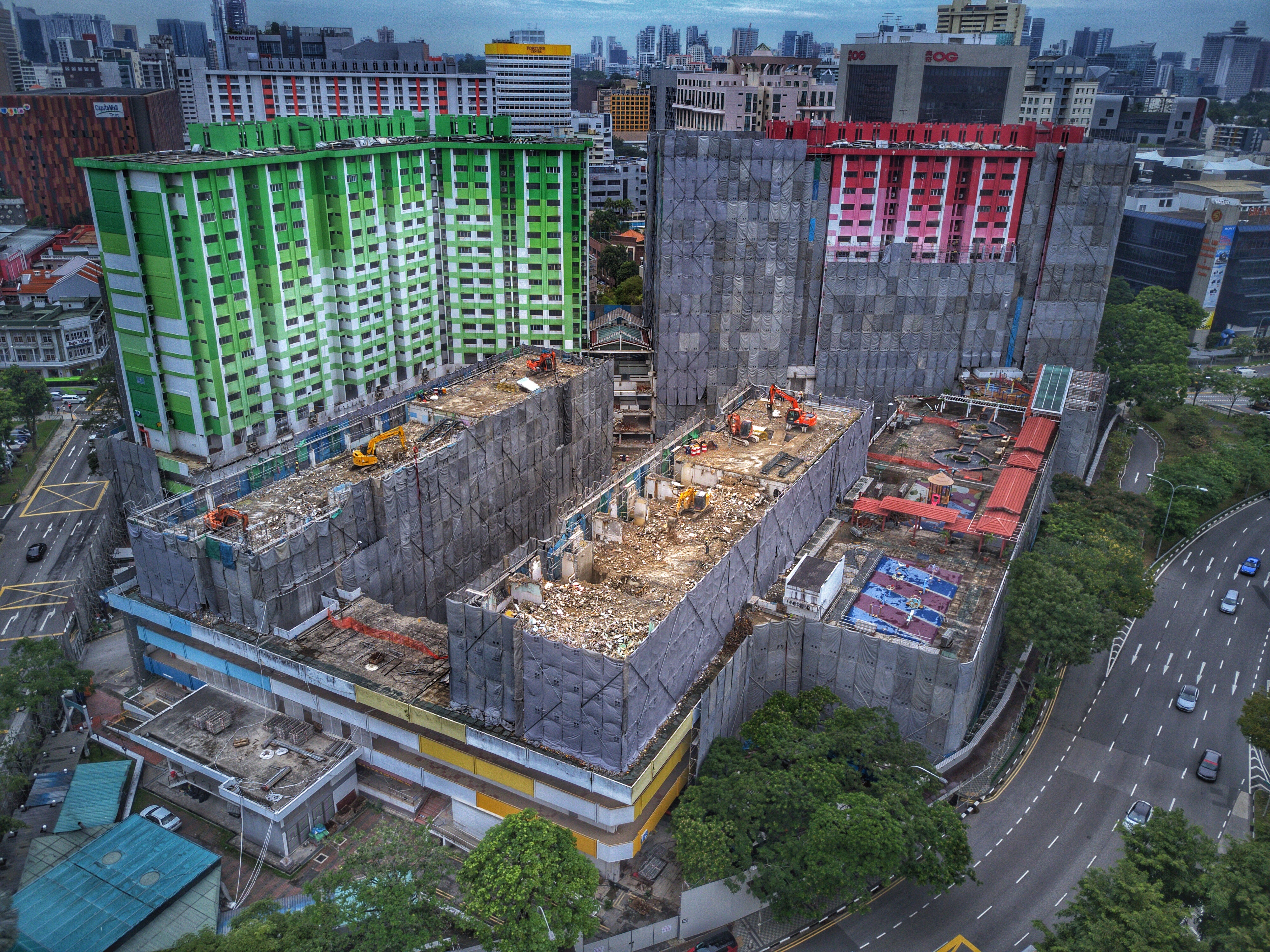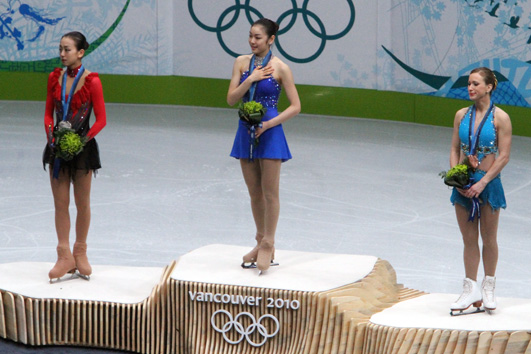|
Rochor Centre
Rochor Centre was a group of buildings in Singapore built by the Housing and Development Board. Dating back to the 1960s, there was an increasing number of people living in slum-like condition with poor sanitation due to the insufficient housing for Singapore's increasing population. Therefore, as part of the urban renewal program under the Housing and Development Board, Rochor Centre was built and completed in 1977 to take in residents and businesses that was uprooted across the city. Location and building description Situated on the fringe of the centre business district in Bugis, Rochor Centre left a strong impression on the urban landscape of Singapore with its colourful facades. Bounded by Ophir, and Rochor Roads, Rochor Centre is home to an eclectic mixed of developments. However, the bustling activity of Rochor Centre will gradually fade with its vivid colours into the pages of history as it makes way for the upcoming North-South Corridor (NSC) and Ophir-Rochor develop ... [...More Info...] [...Related Items...] OR: [Wikipedia] [Google] [Baidu] |
Housing Development Board
The Housing & Development Board (HDB) (; ms, Lembaga Perumahan dan Pembangunan; ta, வீடமைப்பு வளர்ச்சிக் கழகம்) or often referred to as the Housing Board, is a statutory board under the Ministry of National Development responsible for Singapore's public housing. Founded in 1960 as a result of efforts in the late 1950s to set up an authority to take over the Singapore Improvement Trust's (SIT) public housing responsibilities, the HDB focused on the construction of emergency housing and the resettlement of kampong residents into public housing in the first few years of its existence. This focus shifted from the late 1960s, with the HDB building flats with improved fittings and offering them for sale. From the 1970s, it initiated efforts to improve community cohesion in its estates and solicit resident feedback. In the 1990s and 2000s, the HDB introduced upgrading and redevelopment schemes for mature estates, as well as new ... [...More Info...] [...Related Items...] OR: [Wikipedia] [Google] [Baidu] |
Podium And Tower Style
A podium (plural podiums or podia) is a platform used to raise something to a short distance above its surroundings. It derives from the Greek ''πόδι'' (foot). In architecture a building can rest on a large podium. Podiums can also be used to raise people, for instance the conductor of an orchestra stands on a podium as do many public speakers. Common parlance has shown an increasing use of ''podium'' in North American English to describe a lectern. In sports, a type of podium can be used to honor the top three competitors in events. In the modern Olympics a tri-level podium is used. Traditionally, the highest platform is in the center for the gold medalist. To their right is a lower platform for the silver medalist, and to the left of the gold medalist is a lower platform for the bronze medalist. At the 2016 Rio Summer Olympics, the Silver and Bronze podium places were of equal elevation. In many sports, results in the top three of a competition are often referred to as po ... [...More Info...] [...Related Items...] OR: [Wikipedia] [Google] [Baidu] |
Public Utilities Board
The Public Utilities Board (PUB) is a statutory board under the Ministry of Sustainability and the Environment of the Government of Singapore responsible for ensuring a sustainable and efficient water supply in Singapore. The PUB regulates and oversees the country's entire water supply system, which comprises the water catchment systems, drainage systems, water works, pipeline network, water reclamation plants and sewage systems. In April 2020, PUB was also appointed Singapore's National Coastal Protection Agency. The nation's demand for water is about a day, with homes and non-domestic sectors consumption forming 45% and 55% of the demand respectively, and expected to double by 2060. PUB is set to meet 80% of this demand through its NEWater and desalination technologies. The PUB's watershed management and treatment processes has ensured a continuous supply of clean and quality water for Singaporeans over the last four decades. The nation's clean and drinkable 'tap water' ... [...More Info...] [...Related Items...] OR: [Wikipedia] [Google] [Baidu] |
Little India, Singapore
Little India ( ta, லிட்டில் இந்தியா) is an ethnic district in Singapore. It is located east of the Singapore River – across from Chinatown, located west of the river – and north of Kampong Glam. Both areas are part of the urban planning area of Rochor. Little India is commonly known as ''Tekka'' in the Indian Singaporean community. History Little India is distinct from the Chulia Kampong area, which, under the Raffles Plan of Singapore, was originally a division of colonial-era Singapore where ethnic Indian immigrants would reside under the plan's outline of the formation of ethnic enclaves. However, as Chulia Kampong became more crowded and competition for land escalated, many ethnic Indians emigrants moved into what is now known as Little India. (The Chulia Kampong district no longer exists as a distinct area.) The Little India area is reported to have developed around a former settlement for Indian convicts. Its location along the S ... [...More Info...] [...Related Items...] OR: [Wikipedia] [Google] [Baidu] |
Kampong Glam
Kampong Glam ( Malay: Kampung Gelam; Jawi: کامڤوڠ ڬلم ; ; Tamil: கம்போங் கிளாம்) is a neighbourhood and ethnic enclave in Singapore. It is located north of the Singapore River, in the planning area of Rochor, known as the Malay-Muslim quarter. History The name of the area is thought to be derived from the cajeput tree, called "gelam" in Malay. "Kampong" (modern spelling "kampung") simply means "village". Prior to colonisation by the British in 1819, the area was home to the Malay aristocracy of Singapore. It became prominent and more populous after the signing of a treaty between the British East India Company, Sultan Hussein Shah of Johor and Temenggong Abdul Rahman in 1819. The company was given the right to set up a trading post in Singapore under this treaty. During the colony's early history, under the Raffles Plan of 1822, the settlement was divided according to different ethnic groups which included European Town, Ch ... [...More Info...] [...Related Items...] OR: [Wikipedia] [Google] [Baidu] |
Rochor Canal
The Rochor River ( zh, s=梧槽河; ms, Sungei Rochor) is a canalised river in Kallang of the Central Region in Singapore. The river is about 0.8 km in length. The Rochor River is a continuation of the Rochor Canal, and begins beneath Victoria Bridge and empties into the Kallang Basin. The Rochor Canal continues upstream as far as the junction of Jalan Jurong Kechil and Upper Bukit Timah Road; the source of the Rochor River lies in Beauty World MRT station, which has a possible extension to Tengah as part of the Deep Tunnel Sewerage System, it also has a canal that leads to the Kranji Reservoir. "Rochor Canal" is also the name of a subzone within the planning area of Rochor. The river has often been regulated in the past and expanded by channels to control the floods in Bukit Timah. While the lower course is undoubtedly called the Rochor River, the Victoria Bridge upstream alternatively uses the name Rochor Canal or – even more upstream – Bukit Timah Canal, as ca ... [...More Info...] [...Related Items...] OR: [Wikipedia] [Google] [Baidu] |
Rochor Canal Aerial Panorama October 2018
Rochor is a planning area located within the Central Area of the Central Region of Singapore. Rochor shares boundaries with the following planning areas – Kallang to the north and east, Newton to the west, as well as Museum and the Downtown Core to the south. Shopping centres The Verge The Verge, formerly Tekka Mall, is the first and largest modern shopping centre at Little India in Rochor, Singapore, being opened in 2003. The Verge has two buildings, the main building and Chill @ (The Verge). It is located on the southern part of Little India, with the main building is located on the junction of Serangoon Road and Sungei Road and the Chill @ The Verge is located on the junction of Perak Road and Sungei Road. Both of the buildings are separated by Clive Road and the mall lies opposite of Tekka Centre across Serangoon Road. On 16 July 2008, the mall was revamped, which also brought about the name change from Tekka Mall to The Verge. Tekka Centre Tekka Centre is a re ... [...More Info...] [...Related Items...] OR: [Wikipedia] [Google] [Baidu] |
Member Of Parliament
A member of parliament (MP) is the representative in parliament of the people who live in their electoral district. In many countries with Bicameralism, bicameral parliaments, this term refers only to members of the lower house since upper house members often have a different title. The terms Member of Congress, congressman/congresswoman or Deputy (legislator), deputy are equivalent terms used in other jurisdictions. The term parliamentarian (other), parliamentarian is also sometimes used for members of parliament, but this may also be used to refer to unelected government officials with specific roles in a parliament and other expert advisers on parliamentary procedure such as the Senate Parliamentarian in the United States. The term is also used to the characteristic of performing the duties of a member of a legislature, for example: "The two party leaders often disagreed on issues, but both were excellent parliamentarians and cooperated to get many good things done." ... [...More Info...] [...Related Items...] OR: [Wikipedia] [Google] [Baidu] |
Deputy Prime Minister
A deputy prime minister or vice prime minister is, in some countries, a government minister who can take the position of acting prime minister when the prime minister is temporarily absent. The position is often likened to that of a vice president, as both positions are "number two" offices, but there are some differences. The states of Australia and provinces of Canada each have the analogous office of deputy premier. In the devolved administrations of the United Kingdom, an analogous position is that of the deputy First Minister, albeit the position in Northern Ireland has equivalent powers to the First Minister differing only in the titles of the offices. In Canada, the position of deputy prime minister should not be confused with the Canadian deputy minister of the prime minister of Canada, a nonpolitical civil servant position. In Austria and Germany, the officeholder is known as vice-chancellor. A deputy prime minister traditionally serves as acting prime minister when th ... [...More Info...] [...Related Items...] OR: [Wikipedia] [Google] [Baidu] |
Toh Chin Chye Toh Chin Chye ( zh, s=杜进才, p=Dù Jìncái; 10 December 1921 – 3 February 2012) was a Singaporean politician who served as Deputy Prime Minister of Singapore between 1959 and 1968. Toh is widely recognised as one of the founding fathers of Singapore. He was also one of the founders of the People's Action Party (PAP), which has governed the country continuously since independence. Toh was a prominent member of the country's first generation of political leaders after Singapore became independent in 1965. He had served as Deputy Prime Minister between 1959 and 1968, Minister for Science and Technology between 1968 and 1975, and Minister for Health between 1975 and 1981. He had also served as Chairman of the People's Action Party between 1954 and 1981, Leader of the House between 1959 and 1968, and Vice-Chancellor of the University of Singapore (now the National University of Singapore) between 1968 and 1975. After Toh had resigned from the Cabinet in 1981, he c ... [...More Info...] [...Related Items...] OR: [Wikipedia] [Google] [Baidu] |



